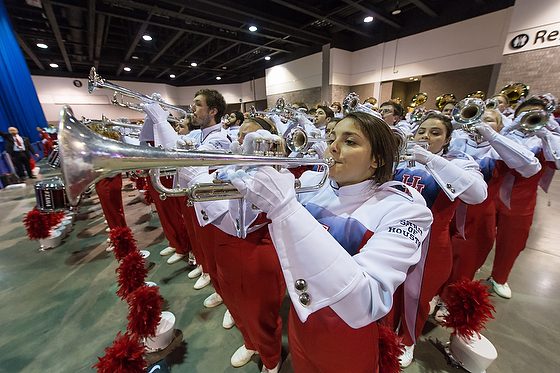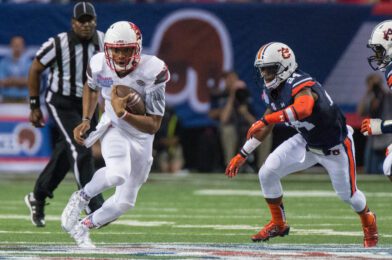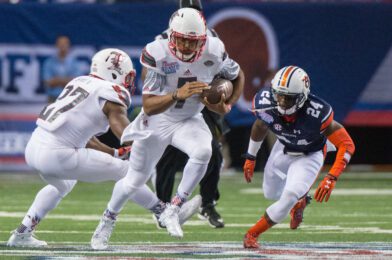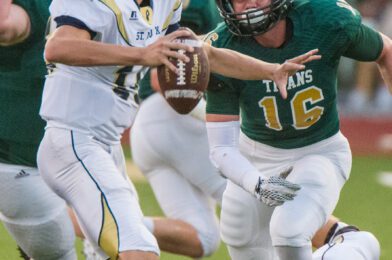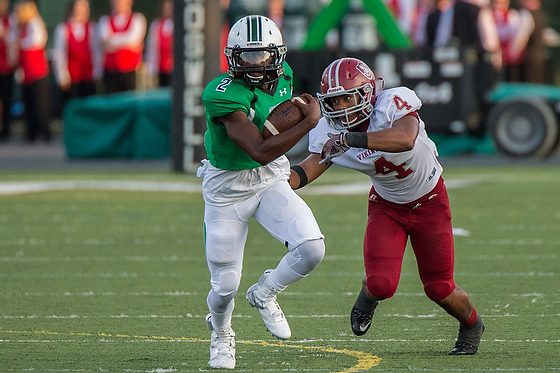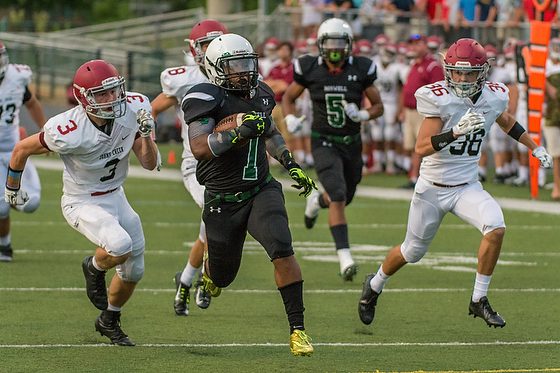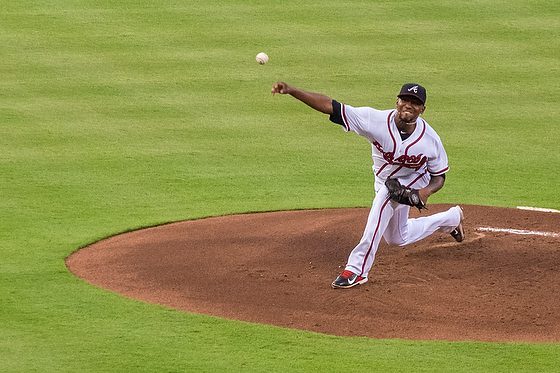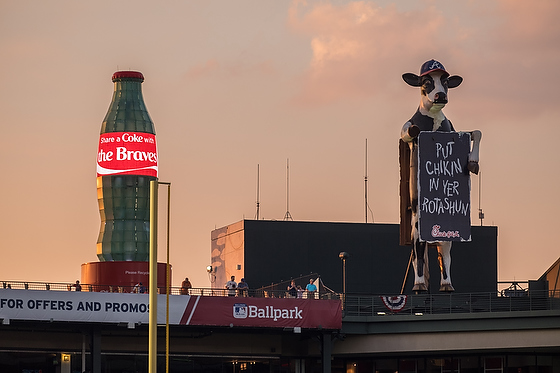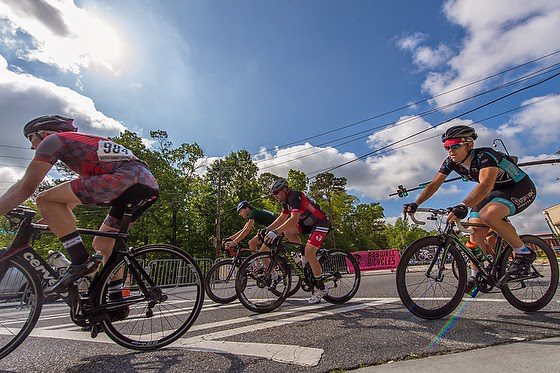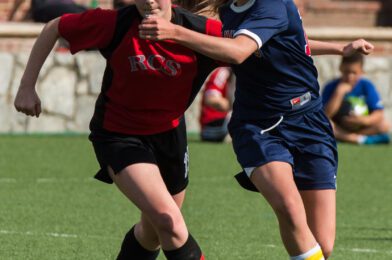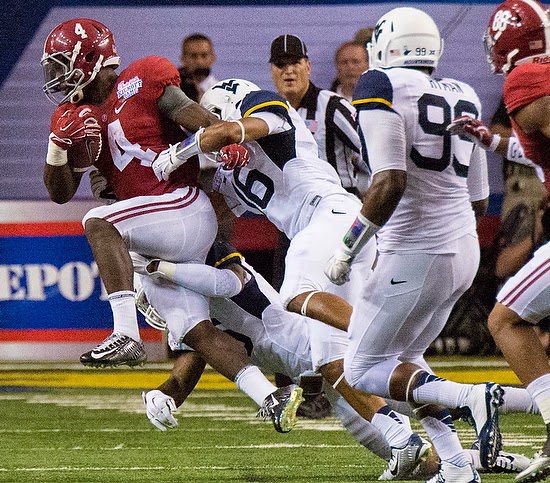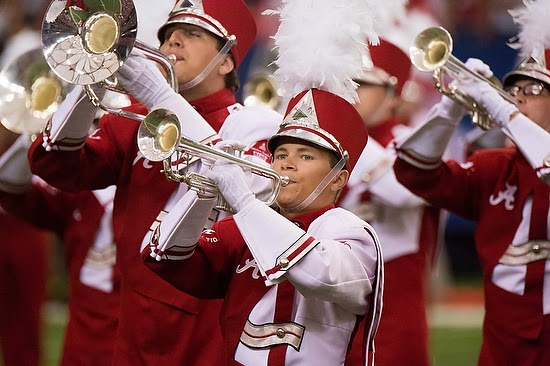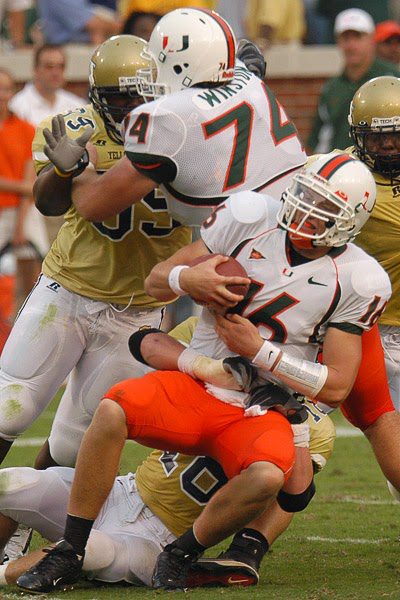 |
| Nikon D4, Sigma 120-300mm ƒ/2.8 DG OS HSM | S, Sigma TC-2001 2x, ISO 7200, ƒ/5.6, 1/2000 |
Here are a few tips to help you get better football pictures this fall.
First, arrive early and set up your gear for shooting sports. I recommend using the AUTO ISO setting the shutter speed to 1/2000, and having the range of the ISO from the lowest to the highest that your camera recommends.
The Nikon D4 recommends ISO 100 – 12800, and if you need to for a specific situation, you can push this ISO as high as 204800, but anything above 12800, you will notice significant noise levels. But sometimes, that is all you can do on some High School football fields.
I didn’t have the newest Nikon Z9 when I took these photos, but the Z9 native sensitivity of ISO 64-25,600, with expansion to ISO 32-102,400, makes it even easier today to get those moments.
I would also use Custom White Balance using the ExpoDisc. I recommend setting the white balance with your shutter speed below 1/100 to get a more accurate reading. Then select your shutter speed to 1/2000. The Sodium Vapor lights used at many venues have the same problem as fluorescent lights–they are pulsing rather than a constant light source.
 |
| Nikon D4, Sigma 120-300mm ƒ/2.8 DG OS HSM | S, Sigma TC-2001 2x, ISO 4000, ƒ/5.6, 1/2000 |
With the cameras all set, you next need to pick a team to feature for the moment. It isn’t easy to cover both teams at the same time. When you choose a group, try to stay in front of the direction they are facing when they line up.
I love to use longer lenses like the 600mm and shoot from an end zone.
 |
| Nikon D4, Sigma 120-300mm ƒ/2.8 DG OS HSM | S, Sigma TC-2001 2x, ISO 12800, ƒ/5.6, 1/1600 |
I have captured the Titan’s defense pursuing the quarterback in this photo. So the caption works well for this photo.
St. Pius X Golden Lions #18 QB Reed Egan looks for an open man downfield while Blessed Trinity Titans #74 Matthew Castner and #16 JD Bertrand pursue him Friday night, August 28, 2015, in Roswell, GA.
 |
| Nikon D4, Sigma 120-300mm ƒ/2.8 DG OS HSM | S, Sigma TC-2001 2x, ISO 5000, ƒ/5.6, 1/2000 |
Blessed Trinity Titans #16 JD Bertrand outruns St. Pius X Golden Lions #8 Cameron Fannon for the first touchdown Friday night, August 28, 2015, in Roswell, GA.
I got this break-away play because I was in front of where they were going and not where they had been.
 |
| Nikon D4, Sigma 120-300mm ƒ/2.8 DG OS HSM | S, Sigma TC-2001 2x, ISO 12800, ƒ/5.6, 1/1250 |
The other thing about being downfield is the background, for the most part is a lot cleaner than the sidelines.
For this last photo: Blessed Trinity Titans #13 Conor Davis looks for some running room while being pursued by St. Pius X Golden Lions #2 Winston O’Striker Friday night August 28, 2015, in Roswell, GA.
Position yourself where you see the faces of your team rather than the backs of their helmets.
Best Advice for Football
Learn all you can about the game, the team, and the plays they like to run. It would help if you were as prepared as the visiting team coaches are for the game to anticipate the plays so you can be in a position to capture the play as it unfolds. You cannot get consistently good photos from constantly reacting to what is happening. You get great results from anticipating.
One more tip from my friend Billy Calzada, Photo/Multimedia Journalist at San Antonio Express-News, “Do a little homework. My meat and potatoes in football are third down and long passing situations. So, before each game, I find out who the leading receiver is on each team, and on third and long, I anticipate a pass to that player. Also, I Sharpie those players’ numbers on my arm for quick reference.”

















